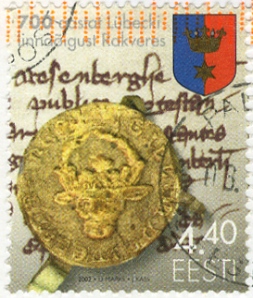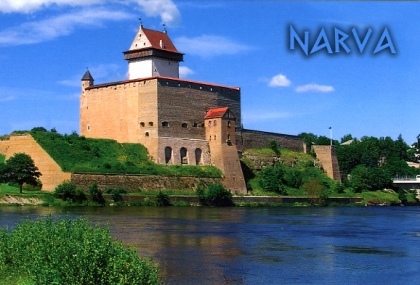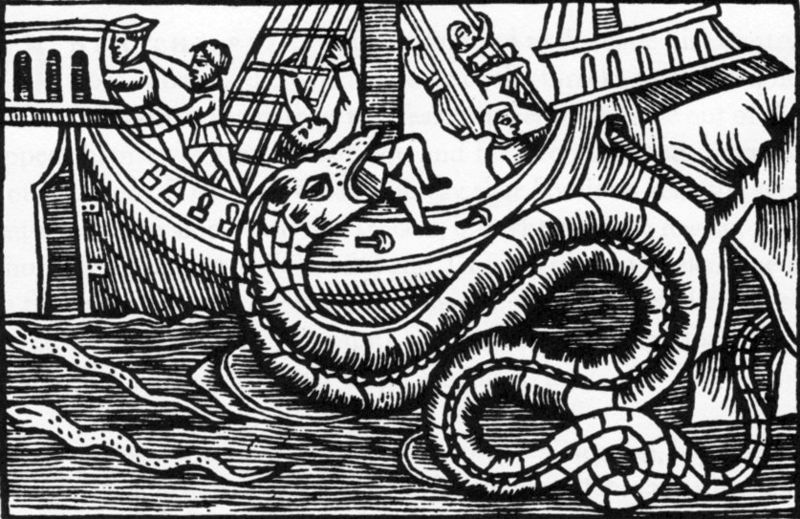 A 4.40 krooni Estonian stamp, issued in 2002 to commemorate the 700th anniversary of the granting of Lübeck Law to Rakvere; the Law was effectively a municipal constitution that gave power to a council (Rat) of merchants. The following is from the Estonian Philately site:
A 4.40 krooni Estonian stamp, issued in 2002 to commemorate the 700th anniversary of the granting of Lübeck Law to Rakvere; the Law was effectively a municipal constitution that gave power to a council (Rat) of merchants. The following is from the Estonian Philately site:
On 12 June 1302, King Eric Menved of Denmark granted the Lübeck Charter to the town of Rakvere (German: Wesenberg) in lands then under Danish rule in northern Estonia, giving it the right to independently regulate important aspects of community life.
The stamp features the old aurochs-head coat-of-arms of Rakvere on the background of a 15th century certificate issued by the municipality, with the present coat-of arms shown in the upper right-hand corner.
Many, but evidently not all, cities with Lübeck rights joined the Hansa; there seems to be some discrepancy with regard to Rakvere (or Wesenberg, as it was then known). It clearly had links with the Hansa, but was it a member? Information welcome. Thanks to Trishka for the stamp.
Tartu in southern Estonia was settled from the 5th century. The crusading Livonian Knights took the town finally in 1224, establishing a bishopric, and, by the time of an attack by Dmitri of Novgorod (son of Alexander Nevsky) in 1262, a settlement of German merchants and artisans had developed. Tartu (or Dorpat at the time) joined the Hanseatic League in the 1280s.
Webcam (town hall square)

Pärnu (Pernau) was founded in 1251, and soon after Neu-Pernau and an Ordensburg (fortification) were established nearby by the Livonian Order, a branch of the Teutonic Order of Knights. The town became an important member of the Hanseatic League, with its ice-free harbour providing access to Livonia.

Narva in the far east of Estonia, on the Baltic and the Russian border, had, like many cities in Livonia, a Hanse community and in the 14th century became a member of the Hanseatic League, on the trade routes to and from Russia.
The card, from Jarek, shows Hermann Castle, founded as a wooden fortress in 1256 by the Danes, first built in stone in the early 14th century, and sold to the Teutonic knights in 1346, who rebuilt it too. The city was largely destroyed in WW2.


